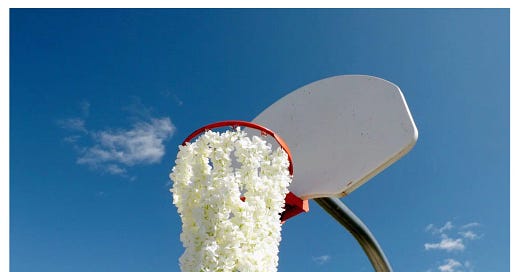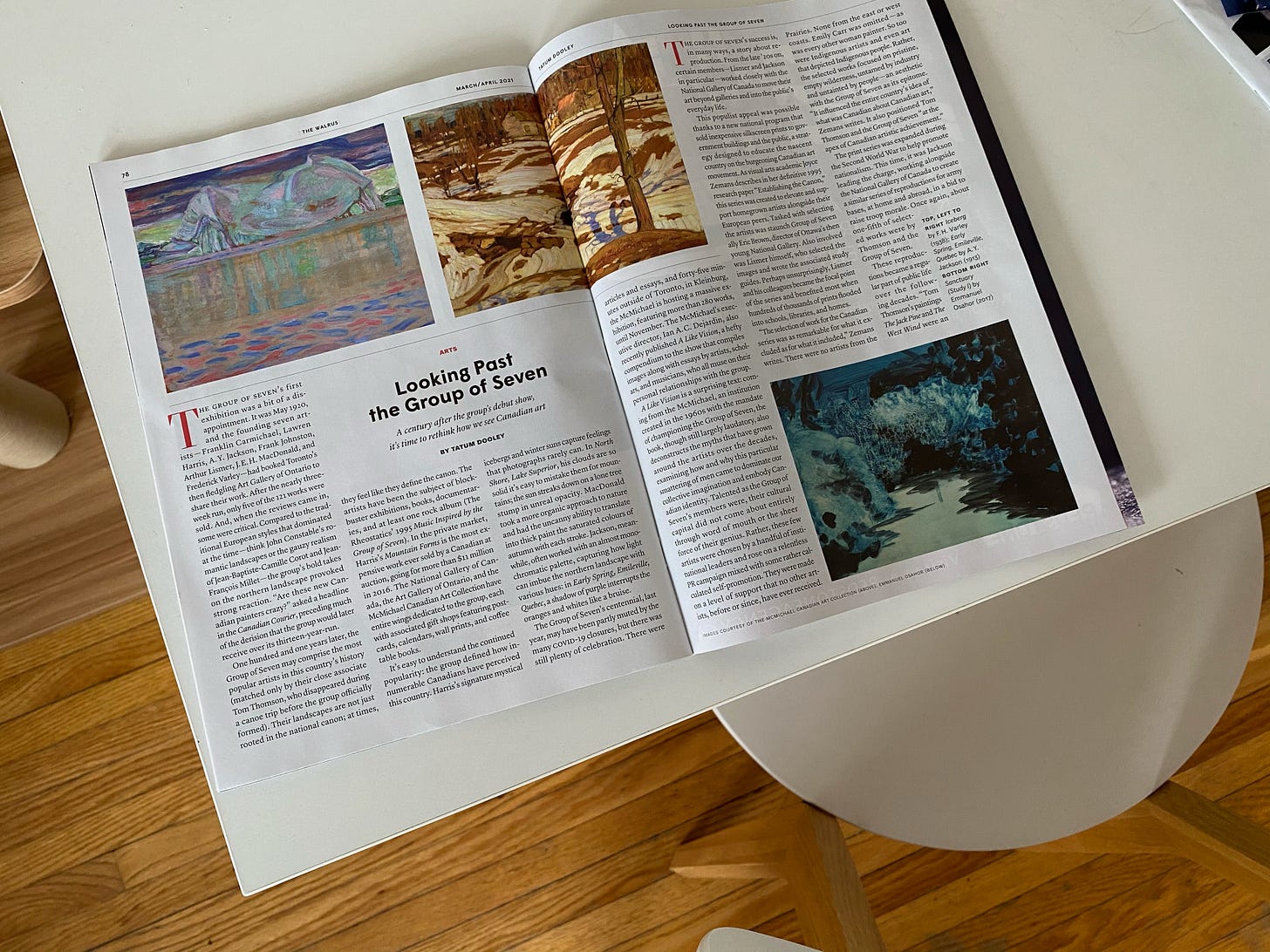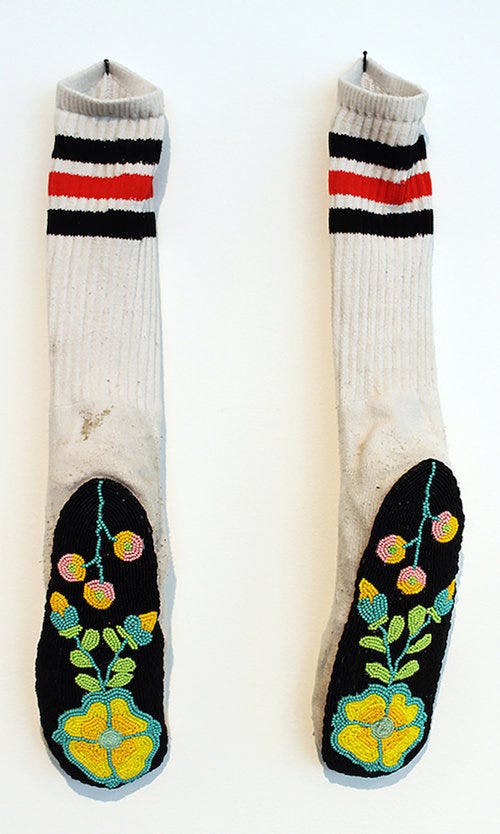It’s been four months since I started the newsletter—it feels a lot longer. I’m happy I finally have space to directly communicate my thoughts and ideas to a group of like-minded art lovers (and a reminder: I’m always open to feedback, tips, or requests!).
In tandem with the free Wednesday letter, there is a Friday newsletter that goes out to paid subscribers. The pricing is $5 a month (the cost of a latte!) or $45 a year. This allows me to spend a fair bit of time on the free newsletter, interviewing artists, running the Instagram account, as well as plan for exciting things in the future (including an upcoming art sale I’m really excited about). I can’t say I’m turning a profit on this venture, but it’s a lot of fun and I think we’re doing meaningful work here.
If you would like to subscribe, for a limited time you can get 20% off (so around $4/$36).
If you’re unable to subscribe, sharing the newsletter with friends, on social media, and liking and commenting on posts goes a long way to support Canadian Art Forecast. I can’t thank you all enough.
Below are some highlights of what to expect from the weekly paid-newsletter:
The Group of Seven Struggle
An essay on my recent essay on The Group of Seven in The Walrus
What ended up happening was months of struggling to write the essay (thank god for patient editors!). It turns out, it’s difficult to pack 100 years of history, shifts in perspective, and various lenses into 2000 words. I realized I needed to reach out to experts to ask what they thought of the Group of Seven. (Why would anyone care about what I thought of them? And if I’m honest, I didn’t think of them much). I interviewed scholars, professors, and artists about the Group of Seven. Unfortunately, most of this didn’t make its way into the final draft. The experiences were so disparate: from love to passive intrigue, to frustration, to worry about climate change. I found it difficult to parse these reactions into one essay. The more research I did, the more frustrated I became. In 100 years, most takes on the Group of Seven had already been written. What did I have to add?
Interview with Loraine Stephanson
LS: Painting from life helps to mentally and physically embed the experience of a particular scene. It’s also a reminder of the complexity of nature (or objects) and the need for ongoing editing decisions. My plein air paintings almost always involve further work in the studio, where the spark of excitement that started the piece becomes lost and regained, often more than once as the painting develops. Elements are added, removed, and relocated in the composition as the painting takes on its own life. “Starlight” is an example of that. It was started on site in daylight but became a nocturne in the studio. The location is a place I know well, and the power of its main elements hopefully remains in the painting.
Interview with Audie Murray
AM: It interests me how an object can exist in many different ways. Oftentimes we see works that are considered utilitarian as craft rather than fine art. In terms of Indigenous artworks, a lot of artworks are not seen as existing in the same categorization as European artworks. This view creates a massive hierarchy within how we see art.
Some of my work makes an object unusable for its intended purpose and that is a considered choice and kind of plays into this joke that art is not something that can function as a usable object. But oftentimes I am inspired by ways of working that would be considered utilitarian like rug hooking and dissecting that way of working to get to the roots of what makes that process so beautiful. Then using that beauty within the process of my practice. So, this process shifts the work in different ways. It shifts the function, it shifts the aesthetic, it shifts the viewer’s perception of the importance of the object. What really is one of the most important things for me is the process of transmuting these materials, because for me the process of working with something for such an extended time is an act of care, of love and it's all very important to the final piece.
LINKS
It's great to see so many Canadian photographers on this year's Silver List—including Anique Jordan, Aaron Jones, and Luther Konadu. The list asks 125 art professionals to submit emerging photographers’ work who they think deserve more attention. It’s a great idea that allows the public to discover new artists to follow. I’m thrilled that so many Canadian’s were picked—also, their work is still affordable enough that I would suggest scooping it up when you can.
The first Indigenous leader of a Canadian public art institution, John G. Hampton, was appointed executive director and CEO of the MacKenzie Art Gallery. Dorian Batycka interviewed Hampton for Artnet News. “To genuinely make room for new perspectives, white supremacy has to be undone, and to do that you have to be able to see it and talk about it. …the way I’m using here isn’t talking about white supremacist terrorist organizations, but about the more subtle and invisible ways that whiteness affords privilege within our institutions,” said Hampton.
Hangama Amiri was interviewed by Kajal Magazine about her large-scale textile installations. “There [are] two things that I’m thinking about. Firstly the history of portraiture, specifically the way painters use the power of gaze to direct the viewer. There’s a one-to-one conversation that happens when the portrait is actually gazing at you, they [the subject of the portrait] somehow puts you in a gate…The other thing I’m thinking about is my material. I’m using fabric not paint. Fabric carries such an immediate invitation to the viewer. It’s fabric! It’s the thing that’s always attached to our body, it’s a material that always gives us comfort.”
THIS FRIDAY: we chat with artist Mursal Nazary on painting still lives and doing an MFA at Boston University, followed up next week with an interview with New York Times writer Evan Nicole Brown on the discovery of a new pigment of blue.









typo: $45 a year** (not month)